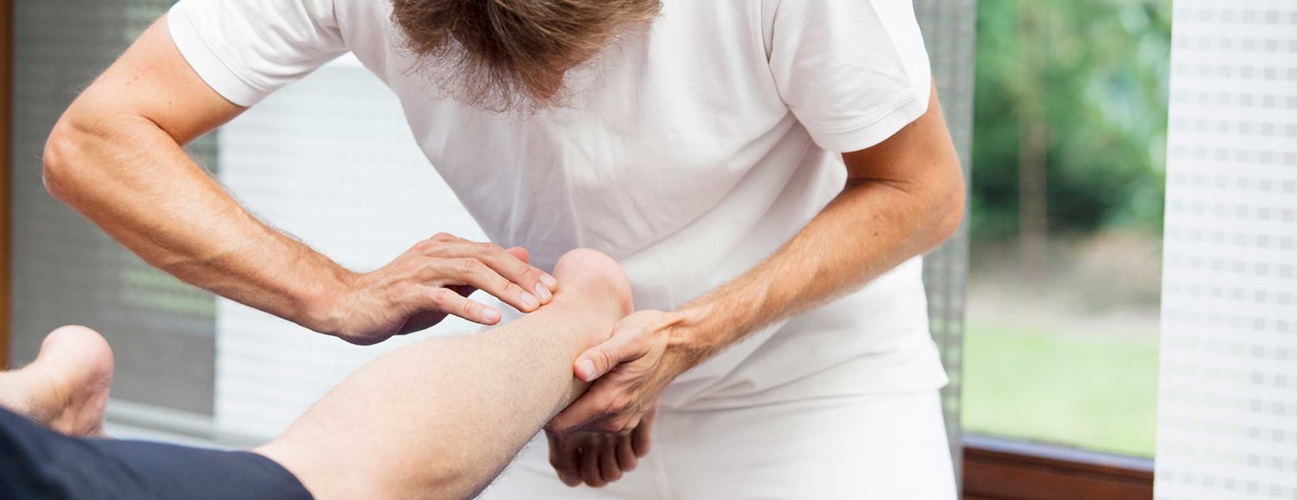
The Achilles tendon, named after the Greek hero Achilles, is a remarkable structure that plays a vital role in human anatomy. Located at the back of the lower leg, this tendon connects the calf muscles to the heel bone, allowing us to perform essential movements like walking, running, and jumping. Despite its small size, the Achilles tendon is incredibly strong and resilient, enabling us to exert great force during physical activities. In addition to its functional significance, the Achilles tendon holds great historical and mythological significance. In this article, we will dive into the fascinating world of the Achilles tendon and explore 19 mind-blowing facts about its structure, function, injuries, and treatment methods. So, get ready to be amazed by the incredible capabilities and complexities of the Achilles tendon!
Key Takeaways:
- The Achilles tendon is crucial for walking, running, and jumping, but it’s prone to injury. Proper care, stretching, and wearing the right shoes can help keep it healthy and strong.
- Named after a Greek hero, the Achilles tendon can withstand a lot of force but needs time to heal if injured. Warm-up, cool-down, and gradual exercises can help protect and strengthen it.
The Achilles tendon is named after the Greek mythological hero
The Achilles tendon derives its name from the Greek hero Achilles, who was invulnerable except for his heel.
It connects the calf muscles to the heel bone
The Achilles tendon connects the two major calf muscles, the gastrocnemius and the soleus, to the heel bone (calcaneus).
It helps in walking, running, and jumping
The Achilles tendon is responsible for transmitting the force from the calf muscles to the foot, enabling movements like walking, running, and jumping.
It can withstand significant force
The Achilles tendon can withstand forces of up to 1,000 pounds during activities like running and jumping.
It is prone to injury
The Achilles tendon is one of the most commonly injured tendons in the body, especially among athletes.
It can be strained or ruptured
Achilles tendon strains or ruptures can occur from sudden movements, repetitive stress, or overuse.
It has a rich blood supply
The Achilles tendon has a robust blood supply, which aids in its healing process following an injury.
It can be affected by tendonitis
Achilles tendonitis is a condition characterized by inflammation of the Achilles tendon, often caused by repetitive stress or overuse.
It can be treated conservatively
Minor Achilles tendon injuries can often be treated with rest, ice, compression, and elevation (RICE) along with physical therapy.
It may require surgical intervention
In severe cases of Achilles tendon rupture, surgery may be necessary to repair the tendon and restore its functionality.
It can benefit from stretching exercises
Regular stretching exercises can help improve the flexibility and resilience of the Achilles tendon.
It should be protected during physical activities
Wearing appropriate footwear and using proper techniques during physical activities can help prevent Achilles tendon injuries.
It has a slow healing process
Due to its relatively poor blood supply, injuries to the Achilles tendon can take a significant amount of time to heal completely.
It can be affected by degenerative conditions
Conditions like Achilles tendinosis can cause degeneration and weakening of the Achilles tendon over time.
It can benefit from eccentric exercises
Eccentric exercises, which involve lengthening the muscle while under tension, have shown to be effective in rehabilitating the Achilles tendon.
It can be strengthened through progressive loading
Gradual, progressive loading exercises can help strengthen and rebuild the Achilles tendon.
It is essential for balance and stability
The Achilles tendon plays a crucial role in maintaining balance and stability while standing and walking.
It can be affected by systemic diseases
Systemic diseases like diabetes and rheumatoid arthritis can increase the risk of developing Achilles tendon problems.
It can be protected with proper warm-up and cool-down routines
Engaging in thorough warm-up and cool-down routines before and after physical activities can help protect the Achilles tendon from injury.
These 19 mind-blowing facts about the Achilles tendon showcase its significance and vulnerability. Taking proper care and paying attention to its health can contribute to overall well-being and mobility.
Conclusion
The Achilles tendon is a fascinating and critical part of the human anatomy. It plays a vital role in our ability to walk, run, and jump. Understanding the Achilles tendon not only enhances our knowledge of the body but also helps us take better care of it.
Through this article, we have explored 19 mind-blowing facts about the Achilles tendon, ranging from its structure and function to common injuries and preventive measures. We have learned that the Achilles tendon is the thickest and strongest tendon in the human body, enabling powerful movements. We have also discovered that it can withstand forces of up to three times our body weight during activities such as running and jumping.
Moreover, we have delved into the Achilles tendon’s susceptibility to injuries and the importance of proper stretching, strengthening exercises, and correct footwear to prevent such injuries. We have even explored various treatment options for Achilles tendon injuries, including physical therapy, rest, and potentially surgery in severe cases.
By being aware of these fascinating facts and taking proactive measures, we can promote the health and well-being of our Achilles tendon, ensuring that it remains strong and functional throughout our lives.
FAQs
Q: What is the Achilles tendon?
A: The Achilles tendon is a strong and fibrous connective tissue that connects the calf muscles to the heel bone. It allows us to push off the ground when walking, running, and jumping.
Q: Why is the Achilles tendon so important?
A: The Achilles tendon is essential for providing power and stability during physical activities. It enables us to walk, run, jump, and perform various movements involving the lower limbs.
Q: Can the Achilles tendon be injured?
A: Yes, the Achilles tendon can be susceptible to injuries such as tendonitis, tendon tears, and ruptures. These injuries can be caused by overuse, sudden and forceful movements, or inadequate stretching and warm-up exercises.
Q: How can I prevent Achilles tendon injuries?
A: To prevent Achilles tendon injuries, it is crucial to engage in proper stretching and warm-up exercises, especially before engaging in intense physical activities. Additionally, wearing appropriate footwear and gradually increasing the intensity of your workouts can help prevent injuries.
Q: How are Achilles tendon injuries treated?
A: Treatment for Achilles tendon injuries can vary depending on the severity of the injury. It may include rest, physical therapy, immobilization using a cast or brace, medication, and in some cases, surgery.
Now that you've learned mind-blowing facts about the Achilles tendon, why not explore more? Protect your feet with the best waterproof running shoes, perfect for those rainy day jogs or muddy trail adventures. Suffering from plantar fasciitis? Discover the top plantar fasciitis socks designed to provide comfort and support for your aching heels. Keep your feet healthy and happy as you continue your journey to better understand the incredible workings of the human body.
Was this page helpful?
Our commitment to delivering trustworthy and engaging content is at the heart of what we do. Each fact on our site is contributed by real users like you, bringing a wealth of diverse insights and information. To ensure the highest standards of accuracy and reliability, our dedicated editors meticulously review each submission. This process guarantees that the facts we share are not only fascinating but also credible. Trust in our commitment to quality and authenticity as you explore and learn with us.


